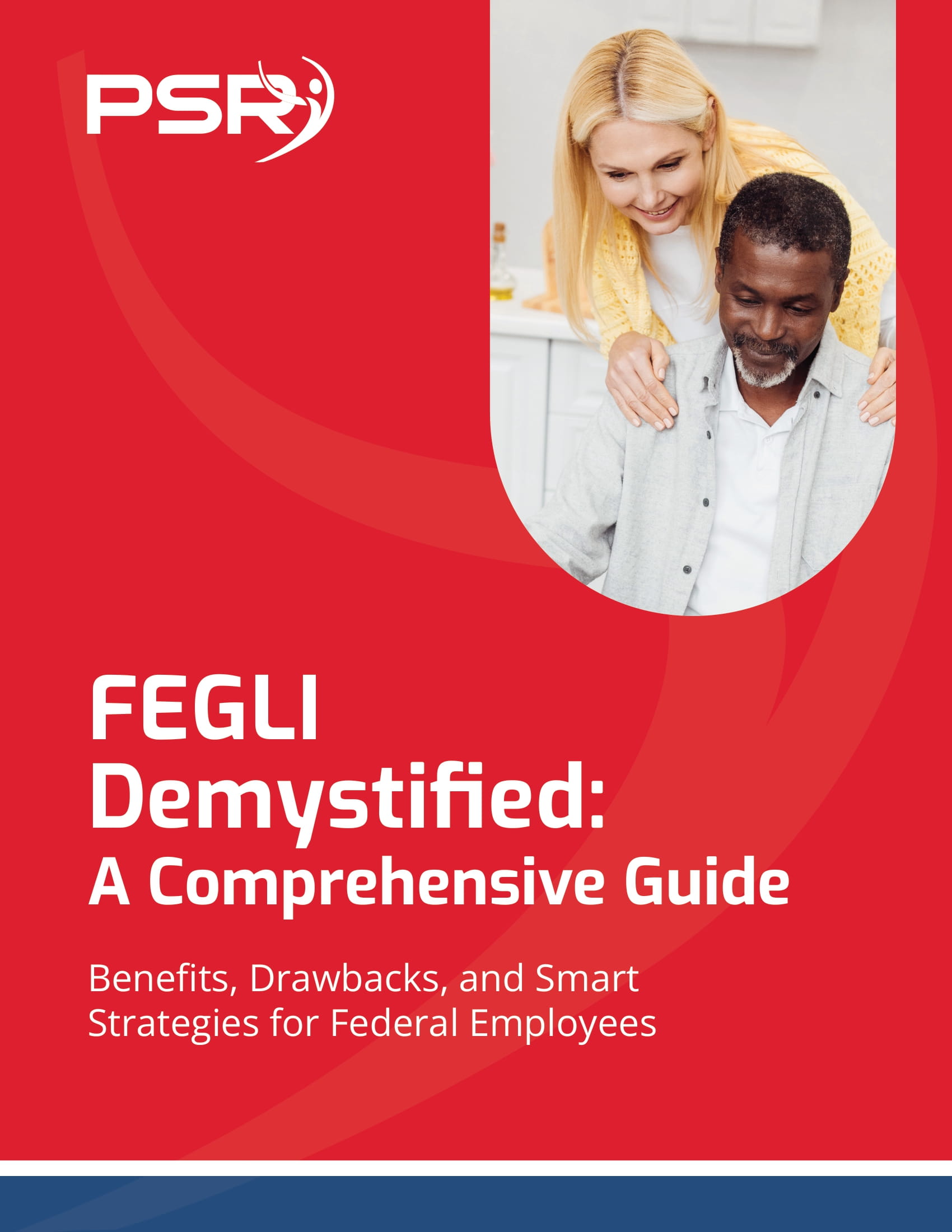Key Takeaways
-
Cancelling your FEGLI coverage too soon in retirement can unintentionally leave your loved ones without sufficient financial protection during a vulnerable time.
-
There are structured, less costly ways to reduce your FEGLI coverage while still preserving essential benefits. Timing and strategy matter.
Why FEGLI Still Matters After You Retire
The Federal Employees’ Group Life Insurance
- Also Read: FAA, Law Enforcement, and Special Federal Employee Categories—Here’s What Makes Their Retirement Unique
- Also Read: Blending Private and Public Sector Retirement Plans Is Complicated—Here’s Where Couples Get It Wrong
- Also Read: The Silent Shift in Postal Service Retirement Benefits That Could Change Everything by 2026
FEGLI isn’t just life insurance—it’s a federal safety net that offers continuity. It’s guaranteed issue, has no medical underwriting, and continues into retirement if you meet the eligibility rules. Dropping it too early might not only disrupt that protection, but also remove your ability to re-enroll later.
When FEGLI Premiums Start Climbing Fast
FEGLI premiums increase significantly with age, particularly for Option B and Option C coverage. Here’s what to be aware of in 2025:
-
Rates spike every five years once you turn 50.
-
The jump from age 65 to 70 is particularly steep.
-
Basic coverage is free for many retirees after age 65—but only if you choose the 75% reduction option.
These rising costs often prompt retirees to consider cutting back. While that’s reasonable, doing it abruptly or without a backup plan can expose your family to financial gaps.
What You Give Up When You Cancel Too Soon
Dropping your FEGLI coverage entirely doesn’t just mean losing life insurance. It also means:
-
Losing future eligibility. Once you cancel, there’s no coming back.
-
Eliminating survivor protection. Your spouse, children, or other dependents could be left without a financial buffer.
-
Giving up guaranteed coverage. FEGLI doesn’t require a medical exam, which is rare in private markets for retirees.
-
Missing transition opportunities. You may be eligible to carry reduced coverage into retirement at a much lower cost.
Many public sector employees don’t realize that a phased approach is possible—and often much safer.
A Smarter Way: Gradual Reductions Instead of Cancellation
Rather than cancelling FEGLI entirely, you may want to consider reducing your coverage in stages. The federal system allows you to do this in several ways:
1. Electing a Post-Retirement Reduction Option
For Basic FEGLI, you can choose one of three options:
-
75% Reduction: Coverage decreases by 2% per month after age 65 until it hits 25% of the original amount. It becomes free after retirement if you’ve carried it for 5 years.
-
50% Reduction: Coverage drops by 1% per month until 50% remains. You pay a small premium after retirement.
-
No Reduction: You retain the full amount and pay ongoing premiums. This is the costliest but offers the highest protection.
2. Dropping Only Optional Coverage
Option B and Option C are optional layers of FEGLI coverage. They’re also the most expensive in retirement. You can:
-
Drop individual multiples of Option B while keeping some in place.
-
Drop Option C for older children no longer dependent.
-
Retain only what your family realistically needs for burial costs, transition expenses, or debt settlement.
This selective reduction gives you control over costs without exposing your family to a complete loss of benefits.
Timing Your Reduction Matters More Than You Think
The timing of your FEGLI elections has long-term implications:
-
You must have had the coverage in place for the 5 years before retirement to keep it post-retirement.
-
Reductions after retirement are irreversible—plan carefully.
-
If you’re approaching age 65, review your elections before that birthday to avoid the most expensive premiums.
If you’re already past 65, you may still be able to lower your costs by switching to a higher reduction rate, though this comes with reduced coverage.
Comparing FEGLI With Private Life Insurance
It’s common to compare FEGLI with private life insurance options, but you should do so with care:
-
Private policies often require a medical exam. If your health has changed, you might not qualify or may be charged far more.
-
FEGLI offers predictability. Even though the premiums rise, they’re regulated and not subject to market swings.
-
Conversion rights are limited. You can convert your FEGLI to a private policy when you separate from service, but it must be done within strict timelines (typically within 31 days of loss of coverage).
Before moving away from FEGLI, make sure your new policy is active, approved, and permanent. Too many retirees attempt to switch and are left unprotected when health or underwriting issues delay or deny approval.
Your Retirement Plan Shapes Your FEGLI Decision
You shouldn’t make FEGLI decisions in isolation. Instead, factor them into your broader retirement strategy:
-
Do you have significant TSP savings that could offset the need for a death benefit?
-
Are you claiming a survivor benefit for your spouse’s annuity?
-
Do you have long-term care needs or dependents with special needs?
FEGLI can serve as a bridge in retirement—not just a death benefit. It can help pay for:
-
Final expenses
-
Medical bills
-
Transition time for surviving family members
-
Estate taxes (if applicable)
All of these considerations affect whether and how much life insurance you really need.
Your Family Structure Should Guide Your Coverage
FEGLI isn’t a one-size-fits-all benefit. Your stage of life and family structure matter:
-
Single retirees may need only minimal coverage for final expenses.
-
Married retirees with dependent spouses may benefit from keeping full Basic coverage.
-
Parents of disabled adult children might need ongoing financial protection beyond death.
Even if your children are grown, consider how your death might affect your spouse’s income, especially if survivor annuity elections are reduced or declined.
How to Make the Right Choice in 2025
In 2025, public sector employees have access to more financial planning tools and professional support than ever before. Use them.
-
Review your latest FEGLI notice and retirement packet.
-
Calculate how much insurance your survivors would actually need.
-
Weigh your current FEGLI costs against potential costs in 5-10 years.
-
Schedule time with a financial advisor or a licensed agent listed on this website.
Dropping coverage entirely should be your last resort—not your first response to rising premiums.
What to Do If You Already Dropped FEGLI
If you previously cancelled your FEGLI and regret it, there may still be options:
-
If it was within the past 31 days, you might be able to rescind the cancellation.
-
If not, consider private coverage—just understand the underwriting requirements.
-
If your health prevents new coverage, focus on protecting your survivors through other financial vehicles like annuity elections, savings, or Social Security survivor benefits.
Always look for integrated solutions. Life insurance isn’t the only way to leave behind security, but it remains one of the most efficient.
Protecting Your Loved Ones Starts With Smart Planning
The goal isn’t to pay more—it’s to ensure your retirement decisions continue to protect those who depend on you. FEGLI offers flexibility, but only if you understand how and when to use it.
Before dropping your policy, compare all your options, understand the permanent consequences, and think about your long-term legacy. Reach out to a licensed professional listed on this website to review your current elections and make a plan that supports your goals without putting your family at risk.













